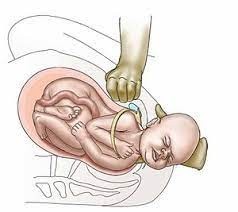You are counseling a client who was just diagnosed at 29 weeks gestational age of having gestational diabetes (GDM) after completing her 3 hour glucose tolerance test. Which statement regarding GDM by the client is false and indicates additional Counseling is required?
I need to start an American Diabetic Association (ADA) diet“
l am at higher risk for a cesarean section delivery
I am worried about getting diabetes later in life!
"My baby is more at risk for cardiac defects”
The Correct Answer is D
While gestational diabetes (GDM) can increase the risk of certain complications for the baby, such as macrosomia (large baby) and hypoglycemia after birth, there is no known increased risk for cardiac defects specifically. The other statements are accurate and appropriate for a client newly diagnosed with GDM.
Nursing Test Bank
Naxlex Comprehensive Predictor Exams
Related Questions
Correct Answer is B
Explanation
In DIC, there is widespread clotting that can lead to depletion of clotting factors and platelets, resulting in bleeding. The priority in the care of DIC is to correct the underlying cause and to replace lost blood products to prevent hypovolemia and hemorrhage. Therefore, the nurse should anticipate an order for the administration of blood products such as packed red blood cells, fresh frozen plasma, and platelets. Administration of steroids may also be ordered to reduce inflammation and stabilize cell membranes. Restriction of intravascular fluids may be necessary to prevent further bleeding, but it is not the first priority. Invasive hemodynamic monitoring may be used to assess the client's fluid and electrolyte status, but it is not typically the first intervention.
Correct Answer is B
Explanation
Suprapubic pressure aids in the delivery of the fetal shoulders, and delivery of the fetal head. to control postpartum hemorrhage and to assess uterine tone after delivery.

Whether you are a student looking to ace your exams or a practicing nurse seeking to enhance your expertise , our nursing education contents will empower you with the confidence and competence to make a difference in the lives of patients and become a respected leader in the healthcare field.
Visit Naxlex, invest in your future and unlock endless possibilities with our unparalleled nursing education contents today
Report Wrong Answer on the Current Question
Do you disagree with the answer? If yes, what is your expected answer? Explain.
Kindly be descriptive with the issue you are facing.
